
Three-minute quiz focused on how standards-based journalism works.
- Subject:
- 21st Century Skills
- Critical Thinking
- Information, Media and Technological Literacy
- Material Type:
- Activity/Lab
- Provider:
- News Literacy Project
- Date Added:
- 01/30/2024

Three-minute quiz focused on how standards-based journalism works.

Two-minute quiz to test how well students can recognize "credibility" online.

Test your ability to distinguish between false and credible social media posts.

Short quiz on pop culture references, emphasizing the value of fact-checking.

This three-week unit plan for grades 3–6, produced by the News Literacy Project and TIME for Kids, builds foundational news literacy skills. It includes core lessons, rich discussion prompts, collaborative group activities and challenging independent work.
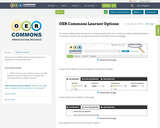
Display Settings on Open Space described with images to explain the setting features.

How does online disinhibition sometimes lead to cyberbullying? Texting and chatting online can sometimes feel just like talking to someone in person, but it's actually pretty different. It's all because of something called the "online disinhibition effect," which makes us more likely to share or communicate differently from how we would in person. Help your students learn to consider this concept before they post, and stop digital drama and cyberbullying before they start. Approximately 45 mins.
LESSON OBJECTIVES: Define "online disinhibition" and describe how it can be both positive and negative. Explain how anonymity, lag time, and lack of nonverbal cues all contribute to online disinhibition. Analyze how online disinhibition can cause cyberbullying and brainstorm ways to counter it.

Summary: This revealing program shows parents what they can do to help protect their kids from Online Predators. FBI Special Agent Randall Clark and law enforcement professionals provide information on how to safeguard kids of any age from Online Predators.

Summary: This guide to Online Safety will empower young people with the information they need to stay safe from Online Predators. Law enforcement professionals provide specific information about what to do and what not to do online. A diverse cast of teenagers reinforces the safety lessons through real life testimonials. A narrative track combines with clear visual examples to make the teaching objectives clear for any viewer.

Keeping students safe in the digital world remains a concern for parents and teachers. Reliable resources are needed to help instruct students on how to stay safe and protect themselves while using technology.This content package contains resources for students, parents and teachers. Spanning all grade levels, there are interactive games for students, informative videos and activities for parents and content rich lesson plans for teachers. All resources are easily accessed and can be utilized immediately with a download. Subjects: Digital Citizenship, Online Safety, Technology, 21st Century Skills, Material Types: Audio/Video, Interactive Media, Lesson Plans, Text/HTMLLevel: K-12License:Creative Commons Attribution Non-Commercial Share Alike Language:English Media Format:Graphics/Photos, Interactive, Text/HTML, Video
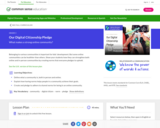
What makes a strong online community? Belonging to various communities is important for kids' development. But some online communities can be healthier than others. Show your students how they can strengthen both online and in-person communities by creating norms that everyone pledges to uphold. Approximately 45 mins.
LESSON OBJECTIVES: Define what a community is, both in person and online. Explain how having norms helps people in a community achieve their goals. Create and pledge to adhere to shared norms for being in an online community.
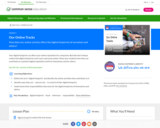
How does our online activity affect the digital footprints of ourselves and others? Your digital footprint can affect your online reputation for a long time. But kids don't always realize that digital footprints aren't just a personal matter. Show your students how they can contribute to a positive digital reputation, both for themselves and for others. Approximately 45 mins.
LESSON OBJECTIVES: Define the term "digital footprint" and identify the online activities that contribute to it. Identify ways they are -- and are not -- in control of their digital footprint. Understand what responsibilities they have for the digital footprints of themselves and others.
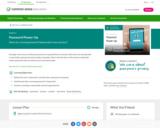
How can a strong password help protect your privacy? Stronger, more secure online passwords are a good idea for everyone. But how can we help kids create better passwords and actually remember them? Use the tips in this lesson to help kids make passwords that are both secure and memorable. Approximately 45 mins.
LESSON OBJECTIVES: Define the term "password" and describe a password's purpose. Understand why a strong password is important. Practice creating a memorable and strong password.

How can we be safe, responsible, and respectful online? From our head down to our toes, and our feet up to our nose, the Digital Citizens teach students how to be safe, responsible, and respectful online. Approximately 25 mins.
LESSON OBJECTIVES: Understand the importance of being safe, responsible, and respectful online. Learn the "Pause & Think Online" song to remember basic digital citizenship concepts.

How do you say goodbye to technology when you don't want to? Whether it's watching TV or playing on a tablet, using tech can be super fun! Often, kids find it hard to transition from an online activity to an offline one. Teach your students a simple routine for how to manage those inevitable digital interruptions that are part of everyone's lives in the digital age. Approximately 30 mins.
LESSON OBJECTIVES: Learn why it's important to be aware and respectful of people while using devices. Learn the Pause, Breathe, Finish Up routine as a self-regulation strategy for transitioning from technology to face-to-face interactions.

Student voices are catalysts for positive change in schools and communities. You can empower them to be well-informed and civically engaged when you participate in the News Literacy Project’s PitchIt! contest.
This is an authentic way to get middle and high school students to learn about and express their thoughts about current events from a news literacy perspective. In addition to exploring an issue important to them, they can help combat misinformation or work to protect freedom of the press.
To have your students participate in PitchIt! and get the most out of it, use NLP’s free resources and curriculum guides. You choose the top essays from your class to submit for judging and prizes.

How might our digital footprints shape our future? Our digital footprints can impact our future. What others find about us online shapes how they see us or feel about us. Help your students learn about their digital footprint and the steps they can take to shape what others find and see about them online. Approximately 45 mins.
LESSON OBJECTIVES: Define the term "digital footprint" and explain how it can affect their online privacy. Analyze how different parts of their digital footprint can lead others to draw conclusions -- both positive and negative -- about who they are. Use the Take a Stand thinking routine to examine a dilemma about digital footprints.
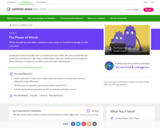
What should you do when someone uses mean or hurtful language on the internet? As kids grow, they'll naturally start to communicate more online. But some of what they see could make them feel hurt, sad, angry, or even fearful. Help your students build empathy for others and learn strategies to use when confronted with cyberbullying. Approximately 45 mins.
LESSON OBJECTIVES: Understand that it's important to think about the words we use, because everyone interprets things differently. Identify ways to respond to mean words online, using S-T-O-P. Decide what kinds of statements are OK to say online and which are not.
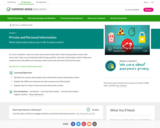
What information about you is OK to share online? It's in our students' nature to share and connect with others. But sharing online comes with some risks. How can we help kids build strong, positive, and safe relationships online? Help your students learn the difference between what's personal and what's best left private. Approximately 45 mins.
LESSON OBJECTIVES: Identify the reasons why people share information about themselves online. Explain the difference between private and personal information. Explain why it is risky to share private information online.
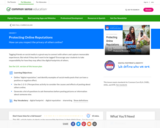
How can you respect the privacy of others online? Tagging friends on social media is a great way to connect with others and capture memorable experiences. But what if they don't want to be tagged? Encourage your students to take responsibility for how they may affect the digital footprints of others. Approximately 50 mins.
LESSON OBJECTIVES: Define "digital reputation," and identify examples of social media posts that can have a positive or negative effect. Use the 1-2-3-1 Perspectives activity to consider the causes and effects of posting about others online. Generate a list of questions to ask themselves before posting pictures or information about someone else.